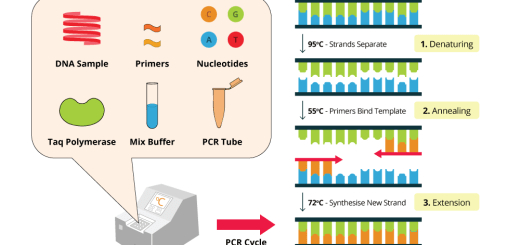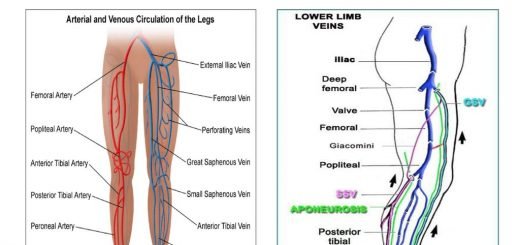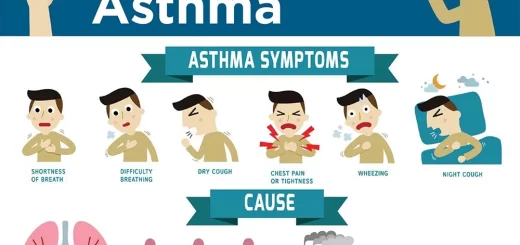Inflammatory bowel disease (IBD) causes, types, symptoms and Is inflammatory bowel disease curable?
Inflammatory bowel disease (IBD) includes two distinct chronic idiopathic destructive inflammatory diseases of the gastrointestinal tract that typically manifest during late childhood and adolescence: Crohn’s disease and Ulcerative colitis.
Inflammatory Bowel Disease (IBD)
Inflammatory bowel disease (IBD) is a term used to describe conditions that cause long-term inflammation in the digestive tract. There are two main types of IBD which are Crohn’s disease and ulcerative colitis.
Crohn’s Disease
Crohn’s disease can affect any part of the digestive tract, from the mouth to the anus, but often involves the small intestine. It causes inflammation that can extend deep into the lining of the digestive tract.
Ulcerative Colitis
Ulcerative colitis only affects the large intestine (colon) and rectum. It causes inflammation and sores (ulcers) on the colon’s inner lining.
Symptoms of IBD
Common symptoms include:
- Diarrhea.
- Abdominal pain and cramping.
- Blood in your stool.
- Fatigue.
- Reduced appetite.
- Weight loss.
Causes
The exact cause of IBD is unknown, but it’s believed to be a combination of genetic, environmental, and immune system factors.
Epidemiology:
- Incidence: (In US), Crohn’s: 5/100,000 UC: 15/100,000
- Age: Most of the cases are Bimodal between 15.40 y 50-80 y.
- Race: More in Jews (4 folds). More in white and well-developed areas.
Pathophysiology of IBD
- Immunologic factors: Gut flora.
- Genetic factors.
- Environmental factors.
- Microbiota.
Immunologic mechanisms of tissue injury
- IBD is referred to as an autoimmune disease or disorder.
- There is an enhanced level of lamina propria T cell activation.
- Increased expression of surface markers of T cell activation.
- Increased production of T cell lymphokines.
- Increased cytotoxic T-cell function. This enhanced T cell activation leads to the recruitment of effector cells such as neutrophils and the subsequent elaboration of destructive substances such as proteases and reactive O2 metabolites. The immune mechanism is not directed against self-antigen.
- The trigger for T cell activation in IBD is unknown. Now gut flora changes are considered +ve main trigger.
- Some theories accuse chronic mycobacterial infection as the underlying cause of Crohn’s disease.
- The defect in the immune system in IBD is thought to be multifactorial: Exogenous antigen. Enhanced delivery of antigen i.e increased intestinal permeability. A heritable propensity to mucosal immune dysregulation.
- 60-70% of patients with UC have antineutrophil cytoplasmic antibody P-ANCA usually it is associated with HLA-DR2 allele.
- ASCA anti saccharomyces cervical antibody is seen in over 60% of patients with Crohn’s disease & < 10% in UC. It becomes positive when intestinal permeability is increased (ANCA & ASCA are not diagnostic, but if the patient refuses to do endoscopy and he has these antibodies, I’ll say that he’s susceptible to IBD).
Genetic factors
- 1st degree relative in Crohn’s disease is 5-8% in ulcerative colitis 2-5%
- IBD loca: IBD1→ IBD8 [imp IBD1 → Chr. 16 (CD)].
- HLA DR2 association in UC.
Environmental factors
- IBD is higher in urban than rural areas.
- Higher levels in higher socioeconomic classes.
- Increase risk of IBD among users of oral contraceptives.
- Decreased risk of UC among smokers while in Crohn’s disease, there is an increased risk of the disease.
Microbiota
- Gut flora or gut microbiota are the micro-organisms (generally bacteria and archaea), that live in the digestive tracts of humans.
- Functions: Direct inhibition of pathogens, Development of enteric protection, and immune system, Metabolism.
- Examples: Enterococcus faecium, Lactobacillus plantarum, Lactobacillus rhamnosus, Propionibacterium freudenreichii, Bifidobacterium breve.
Understanding the Pathophysiology
The genetic makeup of the patient leads to:
- Increased gut permeability to the microbiota.
- Depression of the mucosal defense mechanisms.
- Increased sensitivity of peyre’s patches to floral antigens.
This what is we call genetic susceptibility. With exposure to environmental factors, the floral antigens get modified. The modification in a highly sensitive immune system triggers the abnormal inflammatory immune response.
Crohn’s disease
Crohn’s is the name of the doctor who first described the disease in the US in 1932.
What is Crohn’s disease?
- It is one of IBD.
- Nonspecific inflammation of any segment of GIT.
- Discontinuous or skip area.
- Granulomatous ulceration fissuring or transmural inflammation.
Synonym
- Regional enteritis.
- Regional ileitis.
- Granulomatous colitis.
- Granulomatous enteritis.
Site:
- Ileocaecal 40-50%.
- Small intestine 30-40%.
- Colon only 20%.
- Other areas involvement is rare it may involve the anal canal in 1/3 of cases but usually with rectal sparing.
Pathology:
1- Gross pathology
- Thickened, edematous mesentery of involved part.
- Adipose tissue from the mesentery may be seen to spread over the serosal surface of the bowel (creeping fat)
- Bowel loops adhered together or to adjacent structures.
- Mucosal lesions begin as aphthous ulcer.
- Ulcers enlarge, deepen, and coalesce to form transverse and longitudinal linear ulcers.
- Cobblestone appearance ulcers may penetrate to form a fistula and or abscess.
- Healing occurs by fibrosis stricture formation.
- The changes are observed in the form of skip lesions.
2- MP
- Transmural inflammation and the patchiness of inflammatory infiltrate.
- Non-necrotizing granulomatous are characteristic (Its absence does not exclude the disease).
- Epithelialized fistula tracts.
- Variable degree of atrophy and dysplasia.
Clinical picture
- Remission and relapses sometimes persistent symptoms.
- Three categories (One of them according to behavior) inflammatory, fibro stenotic, and fistulizing.
- Classic symptoms are colicky right abdominal pain (lower quadrant), and diarrhea.
- Low-grade fever and weight loss high fever abscess formation.
- Hematochezia occurs rarely and with colonic involvement.
Signs
- Tenderness all over the abdomen especially right iliac fossa.
- The palpable mass may be present in either thickened and adherent loops or abscess.
- PR: Perirectal abscess, fistula. Rectal prolapse, fissure.
- Patients with inflammatory type malabsorption and weight loss, fibro stenotic leading to Partial intestinal obstruction pain, vomiting, bloating fistulizing leading to Profuse diarrhea fistula may open to the skin or open in the urinary bladder leading to Pneumaturia and UTI.
Diagnosis
Diagnosis depends on clinical, radiologic endoscopic, and histologic findings. ASCA is not diagnostic alone but confirms other criteria.
Laboratory findings
- Leukocytosis.
- Thrombocytosis.
- Anemia: (Fe decreases anemia of chronic disease).
- ESR & CRP increase.
- Hypoalbuminemia.
- B12 deficiency.
- Stool analysis leucocytes.
- Serology: PNACA: 60% UC. ASCA +ve: 60% CD.
- Specific stool test: Fecal Calprotectin. Fecal Lactoferrin.
II. Imaging studies
- Barium follow-through features: skip lesions, cobble stoning, luminal narrowing, string sign.
- Barium enema is inferior to colonoscopy to evaluate the extent of mucosal involvement in the colon. Reflux of barium into the terminal ileum may provide documentation of ileal disease which differentiates Crohn’s disease from UC.
- CT enterocolonography for diagnosis + to diagnose complications (abscess or enterovesicular fistulas).
- Plain x-ray for: Intestinal obstruction, Toxic megacolon.
Endoscopy
- Colonoscopy: Procedure of choice for evaluating the presence and extent of Crohn’s disease. It also allows for intubation of the terminal ileum. Biopsy is taken from normal and diseased areas. Linear ulcers, cobblestone appearance rectal sparing.
- UGIE if needed.
- Video capsule endoscopy.
- Enteroscopy
Differential Diagnosis
Ileocecal Crohn’s
- UC.
- Acute appendicitis.
- Caecal diverticulitis.
- Pelvic inflammatory disease.
- Ileocecal TB.
- Cytomegalovirus.
- Ectopic pregnancy.
- Vasculitis.
- Lymphoma.
Complications
- Abscesses.
- Fistulas.
- Stricture. Acute inflammation and edema. Compression by a mass (abscess), Adhesion, Fibro stenotic stricture.
- Perianal disease: Fistula, abscess.
- Nutritional decrease: Loss of B12, Bile acids, fat malabsorption, oxalate stones.
- Cancer: Small bowel adenocarcinoma cancer colon.
Treatment
1-5-aminosalicylic acid (5 ASA):
Sulfasalazine is 5 ASA + Sulfapyridine. When taken orally 5 ASA is released in the colon by the action of the bacterial mechanism of action is inhibition of interleukin I production and scavenging of free O2 radicals. Proven to reduce the risk of colorectal cancer in IBD patients. Sulfa-free oral Mesalamine (Mesalamine, Olsalazine, Balsalazine).
- Dose 4g/day for mild & moderate it has little effect on small-bowel Crohn’s disease.
- Side effects: Nausea, vomiting, headache, rash, fever, if happens to build up the dose.
- Also motility sperm disorders other compounds contain 5 ASA only to decrease side effects.
- (mesalamine).
Others sustained release formula, tablets, supp. & enema are available.
2- Corticosteroids Action
- Action: Act through impairment of T cell function and impairment of phagocytosis and chemotaxis and cytokine production.
- Dose: 40-60 mg Prednisone day. In severely ill, patients: Should be hospitalized. IV methyl Prednisolone 60-100 mg/day once remission occurs start tapering the dose.
- Side effects: Weight gain, acne, hypertension, DM, infection, osteoporosis.
- Local acting steroids: Budesonido, No systemic SE.
3- Immunosuppressive drugs
Azathioprine 50gm TDS. 6-Mercaptopurine Methotrexate. Cyclosporine CBC is done monthly for the liability of bone marrow suppression.
4- Biological
- Anti-TNFα: Infliximab (Remicade).
- Indications: Severe cases, Failure of conventional treatment, Steroid dependent.
- Dose: 5 mg/kg, Induction at 0, 2, 6 weeks, Maintenance: at 8 weeks intervals
- S.E.: Allergic reaction, Flaring of T.B.
5- Antibiotics
Metronidazole is the best in colonic and ileocolonic type.
6- Nutrition
B12, Ca, Mg. in fistula: Stop oral feeding for some time fibro stenotic leading to low residue diet.
Treatment of complications
- Perforating disease abscess: surgery broad spectrum antibiotics drainage if
- possible under the guidance of CT.
- Fistula: Remicade injection, it is antitumor necrosis factor-alpha 5 mg/kg 0,2,6 weeks.
- Fibro-stenotic: Obstructive symptoms bowel rest, nasogastric suction hydration Aggressive, medical therapy if no response → surgery.
- d- Perirectal disease: metronidazole Ist corticosteroids + 6 Mercaptopurine surgery or Remicade.
How to Choose the appropriate treatment for CD?
The treatment aims to induce and maintain remission. This can be carried in a step-up or step-down approach depending on the severity of the disease.
For Induction of Remission
Mild-Moderate (step up)
- 1st line → local steroids as budesonide +/-5-ASA.
- 2nd line → systemic steroids as prednisone +/- 5-ASA.
Moderate-Severe (Step down)
- 1st line → Azathiprine + Biologic e.g. Infliximab.
- 2nd line → immunosuppressive and biologics.
- Surgery.
For Maintenance of Remission
- Observation or 5-ASA following induction by local steroids systemic steroids.
- Azathioprine following induction by systemic steroids.
- Immunosuppressive and biologics continued as maintenance if used for induction.
You can subscribe to Science Online on YouTube from this link: Science Online
You can download Science online application on Google Play from this link: Science online Apps on Google Play
Gastroesophageal reflux disease (GERD) cause, treatment and How to treat eosinophilic esophagitis?
Pharynx function, anatomy, location, muscles, structure, and Esophagus parts
Tongue function, anatomy and structure, Types of lingual papillae and Types of cells in taste bud
Mouth Cavity divisions, anatomy, function, muscles, Contents of Soft palate and Hard palate
Temporal and infratemporal fossae contents, Muscles of mastication and Otic ganglion
Stomach parts, function, curvatures, orifices, peritoneal connections and Venous drainage of Stomach




